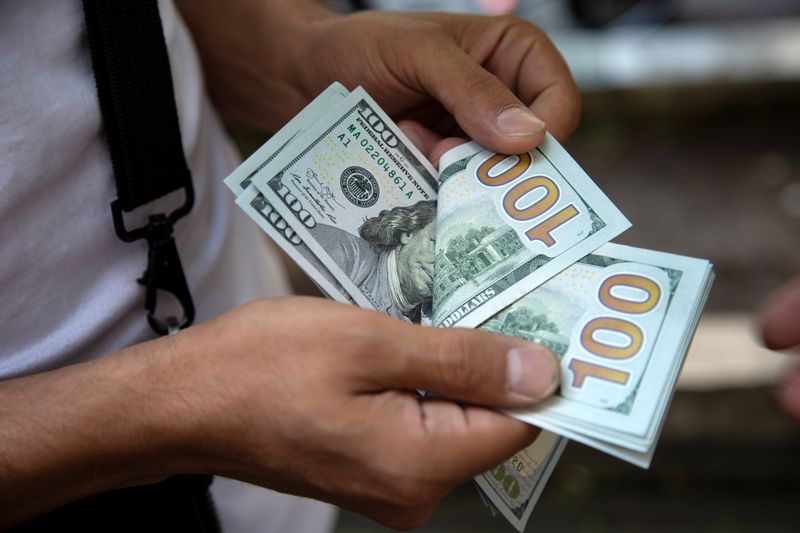Forex
Dollar retreats ahead of Fed minutes; sterling gains despite CPI fall


© Reuters
Investing.com – The U.S. dollar edged lower in early European trade Wednesday, handing back recent gains ahead of the release of minutes from the last Federal Reserve meeting, while sterling gained despite U.K. inflation slowing sharply.
At 03:00 ET (07:00 GMT), the , which tracks the greenback against a basket of six other currencies, traded 0.1% lower at 102.962, not far removed from the 1½-month high of 103.46 seen earlier this week.
Dollar drifts lower ahead of Fed minutes
The dollar climbed higher Tuesday with the release of stronger than expected U.S. for July, indicating that American consumers have proven to be resilient despite inflation that has raised the price of household goods such as food and fuel.
That added more fuel to the debate on what the ‘s next move on interest rates will be, with most still expecting the U.S. central bank to pause on another rate hike when it next meets in September.
The next important clue into officials’ thinking on where interest rates should go comes with the of its July meeting later in the session, and traders appear to be keen to go into this release in a more neutral position, hence today’s dollar selling.
U.K. inflation drops sharply but remains elevated
rose 0.2% to 1.2730, even as U.K. inflation slowed in July to its lowest annual rate since February 2022. The fell to 6.8% from June’s 7.9%, moving further away from October’s 41-year high of 11.1%.
This will be welcomed by the , but this still leaves inflation more than three times higher than its 2% medium-term target, and thus more interest rate increases seem likely.
Additionally, data released Tuesday showed that basic wages in Britain rose 7.8% in June, a new record growth rate, adding to long-term inflation pressures even after 14 back-to-back increases in interest rates.
Euro edges higher ahead of GDP release
rose 0.2% to 1.0924, ahead of the release of second quarter for the eurozone. These are expected to show that gross domestic product climbed 0.3% on the quarter, a small improvement from the previous quarter’s flat growth.
However, is expected to drop 0.1% on the month in June, a , suggesting the region’s industrial base remains under pressure.
Elsewhere, rose 0.2% to 7.2964 after data showed that Chinese declined in July, raising more concerns over the country’s flailing property sector.
fell 0.1% to 145.38, with the yen helped by Tuesday’s strong Japanese numbers, but it remains not far from its recent nine-month low against the dollar.
The yen crossed the 145 level this week, which is expected to potentially attract intervention by the Japanese government to support the falling currency.

 Forex3 years ago
Forex3 years agoForex Today: the dollar is gaining strength amid gloomy sentiment at the start of the Fed’s week

 Forex3 years ago
Forex3 years agoUnbiased review of Pocket Option broker

 Forex3 years ago
Forex3 years agoDollar to pound sterling exchange rate today: Pound plummeted to its lowest since 1985

 Forex3 years ago
Forex3 years agoHow is the Australian dollar doing today?

 Cryptocurrency3 years ago
Cryptocurrency3 years agoWhat happened in the crypto market – current events today

 World3 years ago
World3 years agoWhy are modern video games an art form?

 Commodities3 years ago
Commodities3 years agoCopper continues to fall in price on expectations of lower demand in China

 Economy3 years ago
Economy3 years agoCrude oil tankers double in price due to EU anti-Russian sanctions





















